ECTS:
6
Περίγραμμα Μαθήματος

e-Class
Το μάθημα της ευρωπαϊκής Οικονομίας εισάγει τους φοιτητές στην ανάλυση της άσκησης της οικονομικής πολιτικής στα πλαίσια μιας νομισματικής ένωσης. Στο μάθημα αναλύονται μαθηματικά υποδείγματα λειτουργίας μιας νομισματικής ένωσης. Οι φοιτητές αποκτούν επαφή με έννοιες όπως είναι η νομισματική ένωση, ή άσκηση δημοσιονομικής και νομισματικής πολιτικής, ο ηθικός κίνδυνος και η χρονική συνέπεια μεταξύ άλλων.
Ειδικότερα, μετά την επιτυχή ολοκλήρωση της μαθησιακής διαδικασίας τα προσδοκώμενα μαθησιακά αποτελέσματα αναμένεται να είναι:
● οι φοιτητές θα έχουν την δυνατότητα να ορίζουν με σαφήνεια τα υποδείγματα ανάλυσης διαφόρων οικονομικών θεωριών στα πλαίσια μιας νομισματικής ένωσης.
● αντιλαμβανόμενοι και κατανοώντας οι φοιτητές το πλαίσιο της εφαρμογής της οικονομικής πολιτικής σε ένα περιβάλλον με σταθερή συναλλαγματική ισοτιμία αναμένετε να αναπτύξουν την ικανότητα χρήσης οικονομικής συλλογιστικής για τη διαμόρφωση και την αξιολόγηση οικονομικών συμβουλών .
● οι φοιτητές θα έχουν την ικανότητα κατανόησης εννοιών της οικονομικής θεωρίας με τη χρήση μαθηματικών μεθόδων, μοντελοποίησης συστημάτων με χρήση των μεθόδων αυτών με απώτερο στόχο την ανάπτυξη διάφορων τρόπων σκέψης και την ανάπτυξη στρατηγικών επίλυσης προβλημάτων της οικονομικής θεωρίας.
● αποτελεσματική επικοινωνία και επεξήγηση οικονομικών επιχειρημάτων στο πλαίσιο της άσκησης Οικονομικής Πολιτικής.
| Όνομα | Τίτλος | |
|---|---|---|
| Πραγγίδης Ιωάννης-Χρυσόστομος | Αναπληρωτής Καθηγητής | gpragkid@econ.duth.gr |
| Χιόνης Διονύσιος | Καθηγητής | dchionis@econ.duth.gr |

